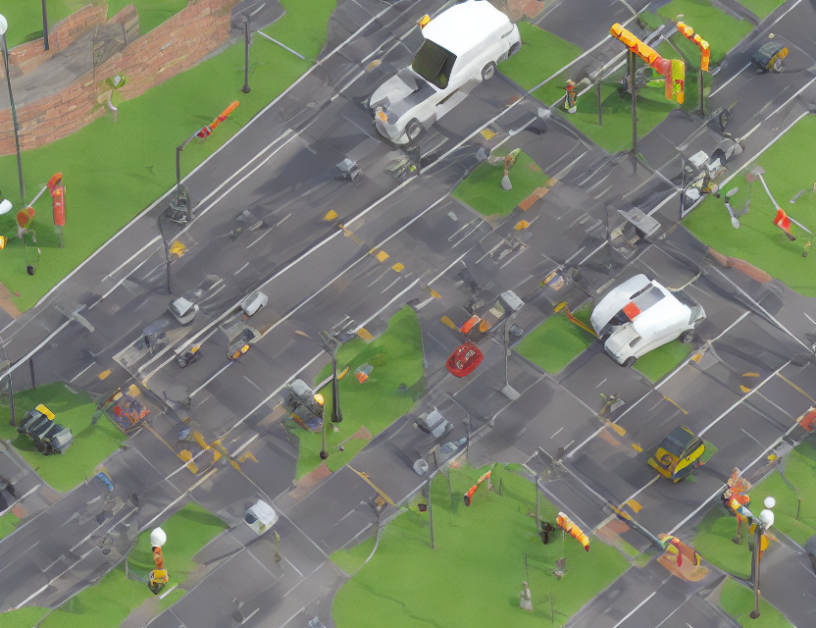In this paper, the authors propose a novel approach to traffic signal control using multi-agent deep reinforcement learning. They present a framework that combines transformer and convolutional neural networks to predict the number of vehicles at an intersection and optimize traffic light phases. The proposed method considers the interactions between agents (vehicles) and the environment, maximizing the overall reward of all agents.
The authors begin by discussing existing methods for traffic signal control, which are often based on simplified assumptions about traffic flow and neglect the complex interactions between vehicles. They argue that these methods can lead to suboptimal performance and unfairness among agents.
To address these limitations, the authors propose a multi-agent deep reinforcement learning approach. They explain that this method involves training multiple agents (vehicles) to learn optimal policies for traffic light control through repeated interactions with the environment. Each agent observes the state of the traffic lights and adjusts its behavior accordingly to maximize its reward.
The authors then delve into the specifics of their proposed framework, which combines transformer and convolutional neural networks to predict the number of vehicles at an intersection. They explain that these networks are trained on historical data and can adapt to changing traffic patterns over time.
Next, the authors discuss the optimization of traffic light phases using the predicted vehicle numbers. They describe how each agent’s policy is updated based on its observations and experiences, with the goal of maximizing the overall reward of all agents. They also explain how the transformer encoder captures temporal dependencies in the sequence of features from the junction matrix at each time step.
The authors evaluate their proposed method through simulations using a real-world traffic dataset. They compare their approach to existing methods and show that it achieves better performance, fairness, and robustness.
Finally, the authors conclude by highlighting the potential of their approach for improving traffic signal control in complex scenarios. They note that their method can handle diverse traffic patterns and adapt to changing road conditions over time.
In summary, this paper proposes a novel multi-agent deep reinforcement learning approach for traffic signal control. By considering the interactions between agents and the environment, the proposed method can optimize traffic light phases in a more comprehensive and fair manner than existing methods. The authors demonstrate the effectiveness of their approach through simulations using real-world data, showing improved performance and robustness compared to traditional methods.
Electrical Engineering and Systems Science, Systems and Control
Reinforcement Learning for Traffic Signal Control: A Survey



